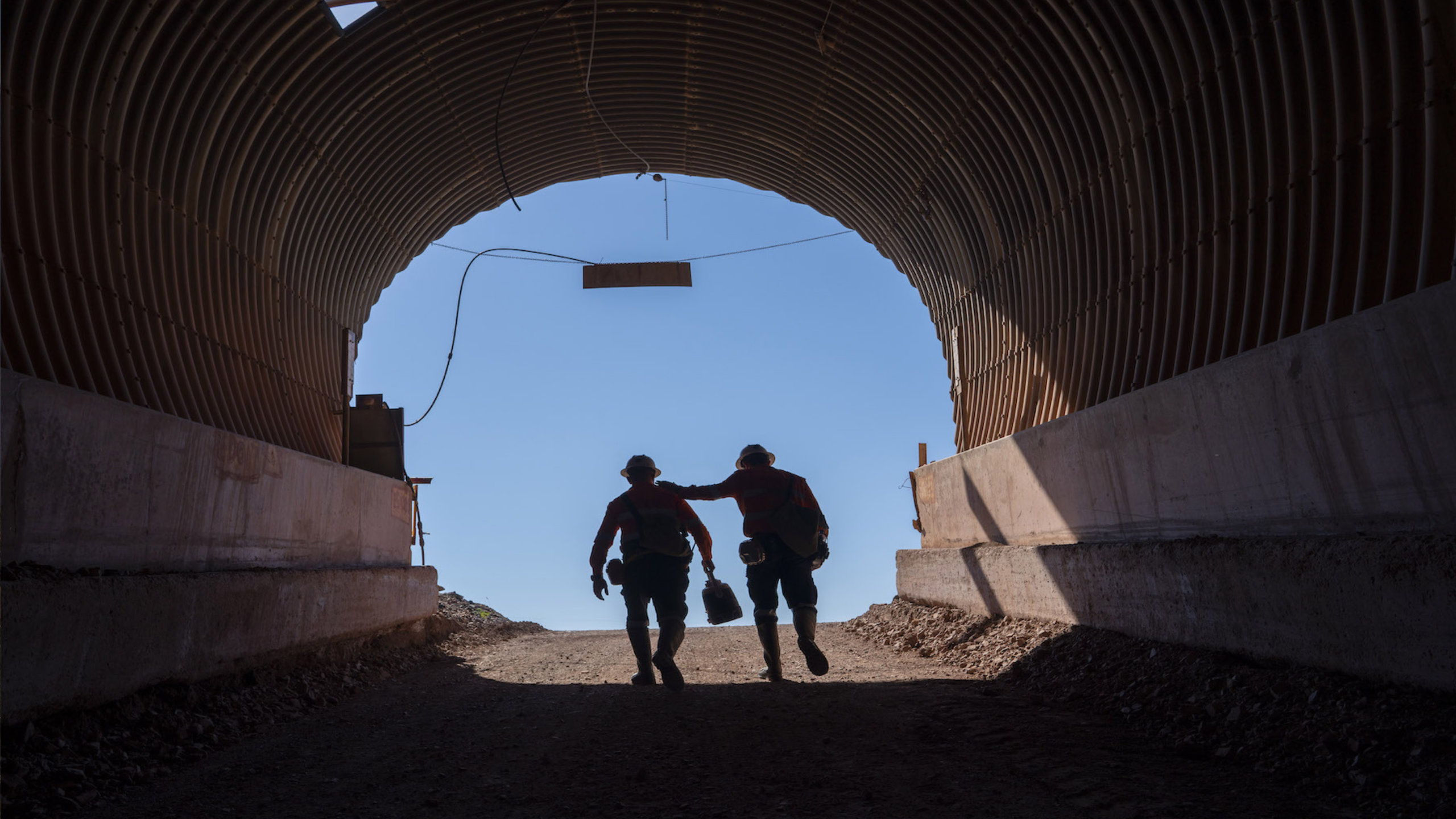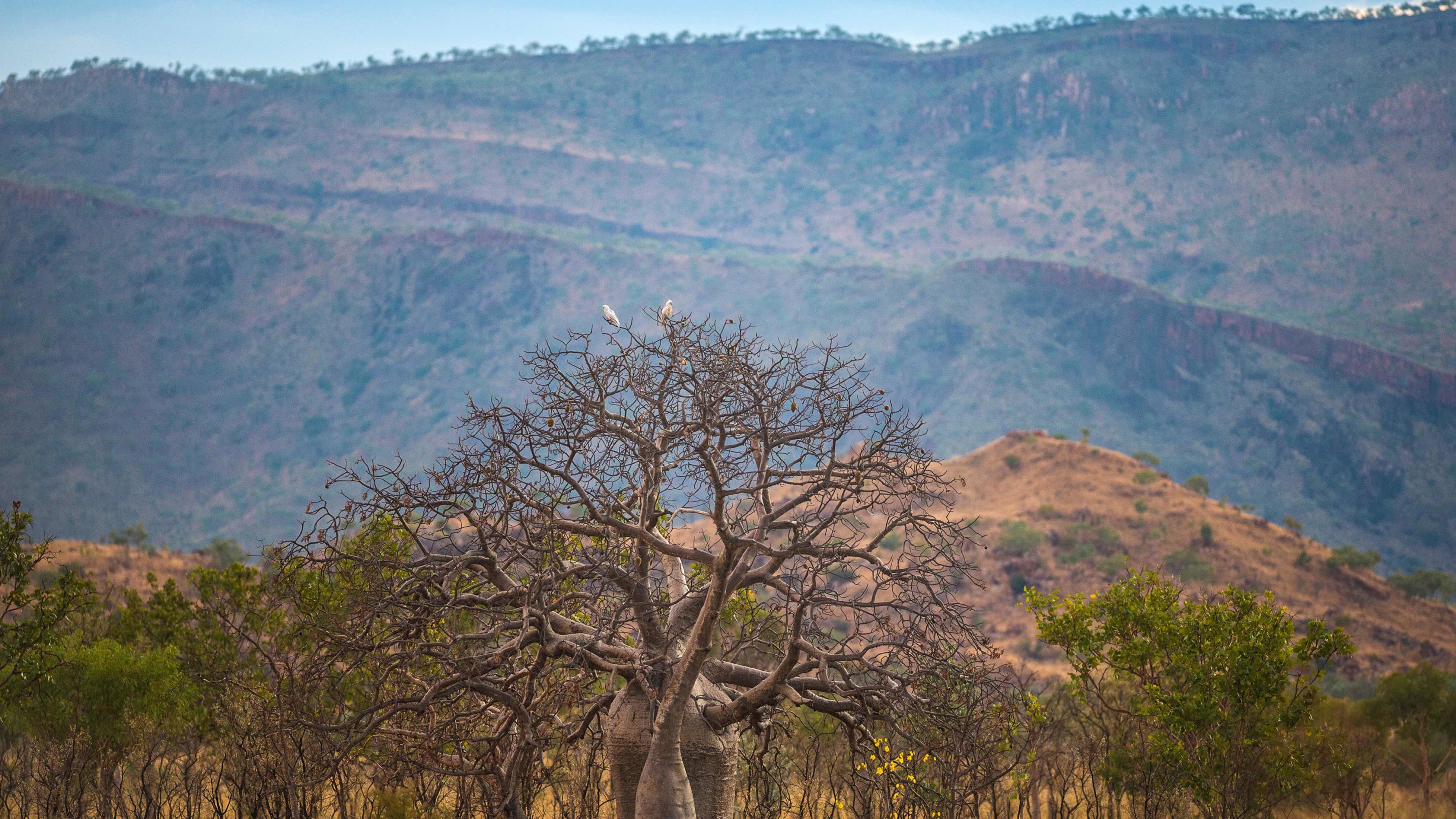Planning for Positive Legacies
The end of a mine marks a new beginning, where eco-tourism, scholarship programs and funding for entrepreneurs create a wealth of opportunities for local communities.

It’s been talked about for years, but when, on November 3rd, the last consignment of ore left the Argyle mine in Western Australia, and the closure of this unique diamond mine became a reality, attention turned to two topics: the future of Argyle’s colored diamonds admired all over the world, and the lasting legacy of the 37-year-old Rio Tinto mine.
A five-year process of intensive and carefully planned rehabilitation begins now, as the land is readied to be handed back to the traditional owners. The end of the mine will in fact mark the opening of a new chapter in the continuing Argyle story. This story sheds a light not only on positive legacies that are being planned for other diamond mines around the globe, but also the benefits a mine can bring to communities during its lifetime and beyond.

One example is a project for traditional owners to grow an exciting new business venture in the remote East Kimberley. A team collecting seeds from Bauhinia trees around the Argyle mine has created a venture which could become a sustainable, fully autonomous business model for other Indigenous communities to follow across Western Australia. In one day, the group can collect tens of kilograms of seeds from more than a dozen different local plant species, which they transport and process 200km north of the mine site. Once they are cleaned, weighed and bagged the seeds are stored in a giant seed library ready for sale, while samples are also tested for viability in a laboratory in Perth. This sustainable enterprise can protect the biodiversity of the land around the closed mine, with the potential to simultaneously create employment for traditional owners long after the Argyle mine has closed.
As with Argyle, planning for closure begins even before the mine has opened, and remains an ongoing process throughout the mine’s life. In Argyle’s case, goals included safety and compliance, land use, water, bio-diversity and even research into native plants and vegetation. It also involves the development of resources – for example on post mining land use – for the future of stakeholders, particularly local communities who have been extensively engaged in discussions around Argyle’s closure.
Planning for closure begins even before the mine has opened, and remains an ongoing process throughout the mine’s life.
Argyle has initiated a ground-breaking program, called ‘Life after Argyle’, designed to help employees make the transition, possibly re-train and find alternative jobs, either inside or outside Rio Tinto. In the years following the last day of mining at Argyle there is much to be done that will keep the mine workforce employed and busy. Because many workers at Argyle, as with all the Canadian mines, come from local communities and have been trained by mining companies in lifelong skills – as electricians, carpenters or mechanics for example – this will ensure employment and livelihood long after the mine closes.
“Right now, in Northern Canada the teams are looking at solar energy for our mining operation,” says Allan Rodel, Project Director of the Venetia Underground Project. “The aim would be for local community members to supply and operate these plants with the eventual end state use of the infrastructure being within the communities thereby supplying sustainable energy. There’s a lot of work around setting up longer term businesses. It’s not just about setting up a physical asset, it’s about programs that empower people.”
This is a crucial benefit: diamonds are mined in some of the most remote and inhospitable corners of the planet, in areas offering limited resources and few opportunities to local communities. Mining companies tap into local manpower and essential ‘traditional’ knowledge, a profound understanding of the land, weather and wildlife for example. In return they offer a wealth of opportunities for work and education, from skills training to leadership instruction, stimulating and nurturing local business start-ups.

In the same spirit, De Beers Group has invested in the Go To Market program, a partnership with Stanford Graduate Business School, training some 50 embryonic entrepreneurs chosen from mining communities in Botswana, Namibia and South Africa. One success story to come out of the program is the soft drinks brand, Just Ginger, the brainchild of two young women from Botswana, who developed a natural ginger-based drink from a traditional local recipe. “We built the brand organically and got funding late last year which we’re only using now,” says Lebogang Mmono, CEO of Just Ginger. “The experience was enlightening. Not only did we get to network with our peers, I got to meet people from a lot of different backgrounds, we got to share so many ideas which helped with our growth process. I changed direction slightly from the way I would have gone if I hadn’t done that program. If I have a question about marketing I know I can post it on the group and someone who is an expert in the field will respond to me and give us advice.” Her business is now set to go international. “I thought it would take five years to get there but now it’s going to be next year. By 2021 I’ll be exporting to the EU and including more hospitality corporates not just individuals.” Often, as in Botswana and also the NorthWest Territories, these initiatives and programs open up a whole new world of possibilities for generations to come.
Mining companies tap into local manpower and essential ‘traditional’ knowledge, a profound understanding of the land, weather and wildlife for example.
The close relationship based on mutually beneficial exchange with local people is a vital component of the meticulous planning that takes place – sometimes for a decade or more – with governments, local or national, or community leaders, before a diamond mine can be given the go-ahead.
A pioneering example of how cultural heritage is protected is the Argyle Participation Agreement with Traditional Owners, signed in 2004, which has been called the most comprehensive arrangement ever made between a resource company and traditional Indigenous land owners negotiated in Australia. The unique structure of the agreement reflects the aspirations of both Argyle Diamond Mine and the traditional owners, building a firm foundation for an enduring partnership and sustainable prosperity both during the life of the Argyle mine and once mining is completed.

At the heart of this initial research and negotiation is the all-important issue of balance: minimizing impact on natural environment, wildlife, and indigenous culture while maximizing economic, educational, health and social benefits to communities. Robert R McLeod, former Premier, Government of North West Territories, explains how local communities were instrumental in negotiating community benefit agreements with the mining companies, while also being involved in environment assessment, and permitting use of land and water. “Diamond mines facilitated the ability of Indigenous communities to participate in the wage economy and also continue to practice a traditional way of life living off the land if they choose to do so,” says McLeod. As a consequence, today, he says, mining constitutes the largest part of the NWT economy, offering extensive employment and business opportunities.
The delicate balance of ecosystems, of environmental, cultural and economic concerns, is the speciality of Allison Rippin Armstrong, Environmental, Social and Governance consultant, who works closely with diamonds mines in Botswana and Canada, as well as with Indigenous peoples in mining communities. She explains that Botswana, as a nation, has flourished thanks to diamond mining, and the fact that the government invests proceeds from the mines back into the country and its communities, building roads, schools, hospitals. Karowe has focused on providing local employment and staff training, so that today 99% of the workforce is Botswanan, including Karowe’s Managing Director; a woman, born, raised and educated in Botswana.
The natural diamond world is committed to improving the lives of communities, through projects and initiatives aimed at generating opportunities that will outlast the life of each mine. Debswana, one of the world’s leading diamond producers located in Botswana, has built and currently runs several primary schools in the mining communities of Jwaneng and Orapa, open to children of employees and residents. Emily Mompe, a teacher at Debswana Primary School, says: “The mine has provided opportunities that would not have been there otherwise. Botswana is a developing country and these mines are doing a lot. We have a huge library that has computers as well as books, our kids go for music, they get opportunities that other kids don’t have.”
From all these initiatives, it’s clear that education, of all kinds and all levels, from children’s schooling to business mentorship and leadership training, is key to improving lives of workers and their families during a mine’s life and beyond. Very often the focus is on women, whose education can be neglected or overlooked in traditional cultures, or simply not available. In Canada, De Beers Group provides scholarships for up to 40 girls and women, to study STEM subjects at university, principally the University of Calgary, while a three-year partnership with WomEng raises awareness of science and technology-based subjects, along with career advice, for girls in Botswana, Namibia and South Africa where the group has mining interests. In the North-West Territories, explains McLeod, the Mine Training Society, a collaboration of diamond Mines, governments and Aurora College and schools, has developed training and apprenticeship programs to provide northern inhabitants with portable skills and opportunities. Business opportunities also allow NWT companies to be competitive and survive in a tough business environment. “Social and education programs are always built into our license to operate,” adds Maxwell Morapeli, Head of Mine Closure at De Beers Canada. “During operation, you start delivering on those projects. On the environmental side, we always plan to offset disturbance and environmental impact, while thinking about how we will recover the water, the land, the stability and turn it back to final land use. Before a mine opens we always ask ourselves what are we leaving behind, the infrastructure or portable skills? Is there an opportunity to transform the area into a solar farm? Or will its future be tourism? You can set yourself up for a five, ten or 20 year journey to make this a reality.”
